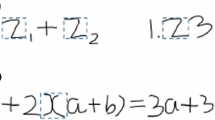Abstract
A support system for form-correction of Chinese characters is developed based upon a generation model SAM, and its feasibility is evaluated. SAM is excellent as a model for generating Chinese characters, but it is difficult to determine appropriate parameters because the use of calligraphic knowledge is needed. By noticing that calligraphic knowledge of calligraphists is included in their corrective actions, we adopt a strategy to acquire calligraphic knowledge by monitoring, recording and analyzing corrective actions of calligraphists, and try to realize an, environment under which calligraphists can easily make corrections to character forms and which can record corrective actions of calligraphists without interfering with them. In this paper, we first construct a model of correcting procedures of calligraphists, which is composed of typical correcting procedures that are acquired by extensively observing their corrective actions and interviewing them, and develop a form-correcting system for brush-written Chinese characters by using the model. Secondly, through actual correcting experiments, we demonstrate that parameters within SAM can be easily corrected at the level of character patterns by our system, and show that it is effective and easy for calligraphists to be used by evaluating effectiveness of the correcting model sufficiency of its functions and execution speed.
Similar content being viewed by others
References
Tominaga Het al. On a method for generating Kanji character patterns. In:Proc. of 3rd USA-JAPAN Computer Conference, pp.127–132, 1979.
Shi C Met al. A calligraphic character generation and brush-writing system.Trans. IECE of Japan, 1986, E69(9): 1030–1040.
Zhang X, Sanada H, Tezuka Y. Computer formation of brush-written Chinese characters.Technology Reports of the Osaka University, 1985, 36(1832): 109–116.
Ren Z, Qian P. Essential calligraphy for square-styled brush-written Chinese characters. Shanghai: Shanghai Publishing of Painting and Calligraphy, 1987.
Fijiwara S. A guide to calligraphy: Graphic dictionary of square-styled brush-written Chinese characters, Tokyo: Seishin Book House, 1983.
Author information
Authors and Affiliations
Additional information
Zeng Jianchao was born on Nov. 5, 1961, in Wuhan, China. He received the B.S. in electronic engineering in 1983 from Huazhong University of Science and Technology, China, and the M.S. and Ph.D. in communication engineering in 1987 and 1990 from Osaka University, Japan, respectively.
He worked as a post doctoral scientist at Tsinghua University from 1992 to 1993. And he is currently an Associate Professor of the Department of Computer Science and Technology at Tsinghua University. His research interests are pattern recognition, character synthesis, computer vision, multimedia and virtual reality.
He is the vice director of the Youth Committee of the Chinese Electronic Association.
Hidehiko Sanada graduated from the Department of Communication Engineering at Osaka University in 1962. He got his Ph.D. degree from Osaka University in 1967 and then worked there. He was a lecture from 1973 and an Associate Professor from 1977. He has been a Professor at the Department of Economics since 1987. His research interests include information networking, scheduling, pattern recognition and business administration.
Yoshikazu Tezuka was born in 1928. He graduated from the Department of Communication Engineering at Osaka University in 1951. He was an Associate Professor at Osaka University from 1956 and he had been a professor there until 1993 when he passed away. His research interests include pattern recognition, computer networks and communication engineering.
Xu Guangyou graduated from the Department of Automation at Tsinghua University in 1963. During the years 1982–1984 he was a visiting professor at Purdue University. He is now a Professor of Department of Computer Science and Technology at Tsinghua University. His research interests are computer vision, pattern recognition and multimedia.
He is a member of The Chinese Society of Graphics and Image, and The Association of Computer Vision and Intelligent Control of China.
Rights and permissions
About this article
Cite this article
Zeng, J., Hidehiko, S., Yoshikazu, T. et al. A form-correcting system of Chinese characters using a model of correcting procedures of calligraphists. J. of Comput. Sci. & Technol. 10, 23–34 (1995). https://doi.org/10.1007/BF02939519
Received:
Revised:
Issue Date:
DOI: https://doi.org/10.1007/BF02939519




